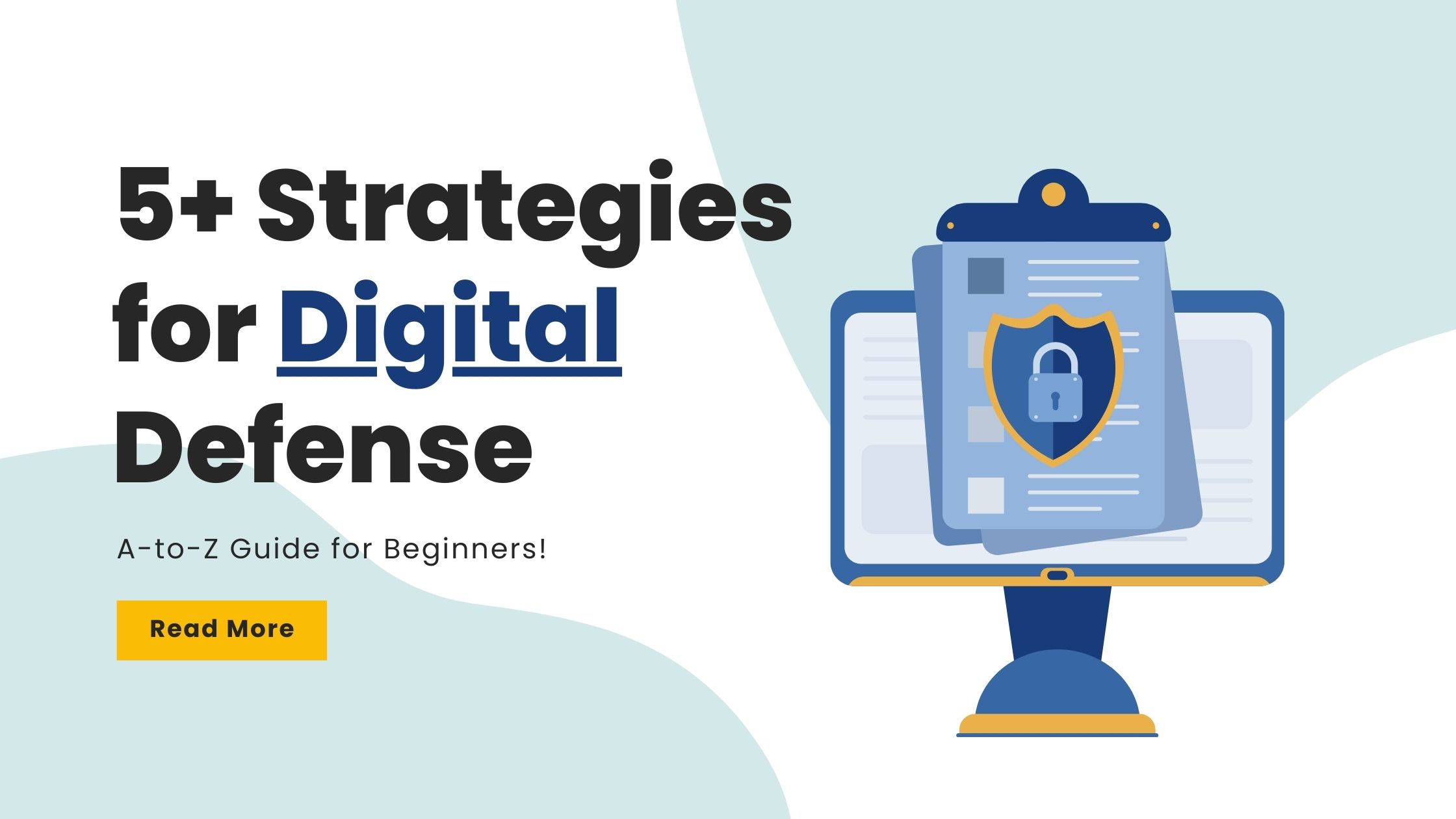In today’s article, I am going to tell you about 5+ Strategies for Digital Defense, so if you want to know about it, then keep reading this article. Because I am going to give you complete information about it.
In the interconnected world we inhabit, where the digital realm is an integral part of our daily lives, the significance of internet security cannot be overstated. The evolving landscape of cyber threats requires individuals and organizations to adopt comprehensive strategies to defend against an array of potential risks.
In this article, we embark on a journey to explore effective strategies for digital defense, examining the threats that loom large, proactive measures to fortify defenses, the importance of cyber hygiene, and preparations for incident response and recovery.

Today’s article focuses on the same, i.e. “5+ Strategies for Digital Defense” The articles entail each bit of information necessary for you to know.
Let’s get started!✨
Table of Contents
5+ Strategies for Digital Defense
Protecting digital assets and data is crucial in today’s interconnected and technology-driven world. Here are five strategies for digital defense:
1. The Evolving Threat Landscape
- Malware and ransomware:
In the complex ecosystem of the internet, malicious software (malware) and ransomware have emerged as formidable adversaries. Malware, encompassing viruses, trojans, and spyware, can infiltrate systems and compromise data integrity. Ransomware, on the other hand, poses a more immediate threat by encrypting files and demanding a ransom for their release. The potential impact on both individuals and businesses is severe, underscoring the necessity for robust digital defenses.
- Phishing and Social Engineering:
Cybercriminals often resort to cunning techniques such as phishing and social engineering to exploit human vulnerabilities. Phishing involves deceptive emails or websites designed to trick individuals into divulging sensitive information, while social engineering manipulates human psychology to gain unauthorized access. Recognizing these tactics is essential for individuals to avoid falling prey to such attacks.
- Zero-Day Exploits:
Zero-day vulnerabilities, undiscovered by software developers, present a constant challenge. Cybercriminals exploit these vulnerabilities before developers can release patches, making timely updates imperative. This underscores the need for users and organizations to prioritize software updates and maintain vigilance against emerging threats.
2. Building a Robust Defense Framework
- Antivirus and anti-malware solutions:
To counter the ever-evolving landscape of malware, investing in robust antivirus and anti-malware solutions is essential. Regular updates to these programs ensure that they can effectively identify and neutralize emerging threats, providing a critical layer of defense against malicious software.
- Firewalls and Intrusion Detection Systems:
Firewalls act as a barrier between a trusted internal network and untrusted external networks, controlling incoming and outgoing traffic. Coupled with intrusion detection systems, which monitor network or system activities for malicious exploits, these tools contribute significantly to securing digital environments.
- Data Encryption:
As data traverses the digital landscape, ensuring its confidentiality is paramount. Data encryption involves converting information into a code that is unreadable without the proper decryption key. Employing encryption for sensitive data during transmission and storage protects it from unauthorized access and enhances overall security.
- Multi-Factor Authentication (MFA):
Enhancing traditional authentication methods, multi-factor authentication (MFA) adds an extra layer of security. By requiring users to provide multiple forms of identification, such as a password and a temporary code sent to their mobile device, MFA mitigates the risk of unauthorized access even if login credentials are compromised.
3. Cyber Hygiene Practices
- Regular Software Updates:
The adage “prevention is better than cure” holds in the realm of cybersecurity. Regular software updates, including operating systems, applications, and security software, are critical for patching vulnerabilities. By staying current with updates, individuals and organizations can reduce the risk of falling victim to cyberattacks.
- User Education and Training:
Human error remains a significant factor in cybersecurity breaches. User education programs play a pivotal role in raising awareness about common security pitfalls, especially the dangers of phishing. Educated and vigilant users are crucial components of a robust defense strategy.
- Password Management:
Passwords serve as the first line of defense against unauthorized access. Creating strong, unique passwords and using password management tools alleviate the risk of compromise. Password hygiene should be a fundamental aspect of individual and organizational cybersecurity practices.
- Device Security:
In the age of ubiquitous connectivity, securing all devices is imperative. From smartphones and tablets to IoT devices, each entry point must be fortified against potential threats. Implementing security measures on all connected devices ensures a comprehensive defense strategy.
4. Incident Response and Recovery
- Incident Response Plans:
Despite best efforts, security incidents may occur. Preparedness is key, and having a well-defined incident response plan enables swift and effective actions to mitigate the impact of a security breach. Clear protocols for identifying, containing, eradicating, recovering, and learning from incidents are vital.
- Data Backups:
Ransomware attacks, in particular, underscore the importance of regular data backups. In the event of data loss, a robust backup system allows for the swift recovery of essential information, reducing downtime and potential financial losses.
5. Future Trends and Emerging Technologies
Looking ahead, emerging technologies are poised to shape the future of internet security. Artificial intelligence is increasingly being leveraged for threat detection, rapidly identifying and responding to potential risks. Blockchain technology offers secure and transparent transactional processes, while the integration of biometrics into authentication systems enhances security further.
For an added layer of security in your digital endeavors, click here to explore premium proxy services.
Read also:)
- What is Digital Transformation: A-to-Z Guide for Beginners!
- What Is Digital PR: A-to-Z Guide for Beginners!
- What is Digital Presentation: A-to-Z Guide for Beginners!
So hope you liked this article on 5+ Strategies for Digital Defense. And if you still have any questions or suggestions related to this, then you can tell us in the comment box below. Thank you so much for reading this article.